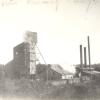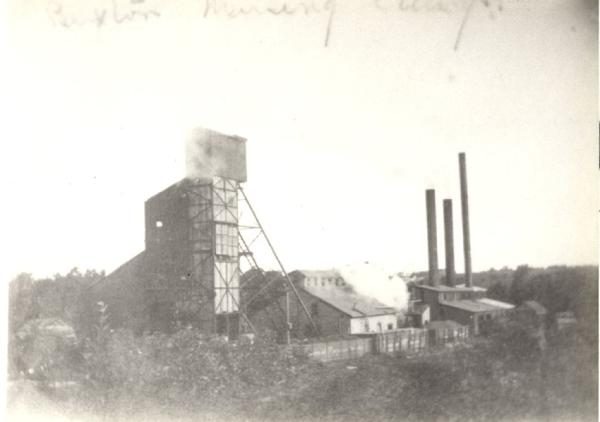Buxton, Iowa: The Former Black Utopia
| Grade | 9th -12th Grades | Class | U.S. History | Length of Lesson | 50 Minutes |
| Lesson Title | Buxton, Iowa: The Former Black Utopia |
| Unit Title | Iowa's Impact on History |
| Unit Compelling Question | How did groups of Iowans influence history? |
| Historical Context: 2018.012.014 2018.012.018 Buxton was a mining town founded in 1895 by the Consolidation Coal Company (CCC), which supplied the Chicago and Northwestern Railway. The company established Buxton after a four-year search for new coal veins. After its search, the company purchased 8600 acres of land in Monroe County and 1600 acres in neighboring Mahaska County in 1900 for $275,000. The mining business drew approximately 5,000 people to Buxton, creating a thriving economic and social community. Buxton soon became the largest unincorporated city in the nation and the largest coal town west of the Mississippi River. The prosperous coal mining town was one of few in Iowa's history to have a majority African American population. Equality was an important part of Buxton's success. Miners were paid equal wages, a standard home was provided for each family, and segregation was not allowed. Many African Americans became prominent business and community leaders. At a time when racism and segregation were prevalent in American society, the residents of Buxton experienced relative equality. Five years after the town was established, 55% of its residents were African American. Buxton experienced a series of events that led to its slow demise beginning in 1914. That year, miners worked fewer days due to labor disputes, an explosion in one of the town's nearby mines led to its permanent closure, and the CCC established a new coal camp ten miles west of Buxton. All three events drew residents out of the town, a trend that continued in the following years when large fires destroyed parts of Buxton and nearby settlements. Furthermore, after the coal boost provided by World War I ended in 1917, the coal industry in Iowa rapidly declined. The industrialization of coal mining also contributed to Buxton's decline, as Iowa's coal formations did not adapt well to large-scale mining operations and railroads began to rely more heavily on eastern coal. By 1916, the Iowa Bystander, an African American newspaper, observed that Buxton "looked like a deserted village." By 1919, the population of Buxton had dwindled to less than 400, and in 1923, Consolidation Coal Company moved its headquarters out of Buxton. Two years later, the company was bought out by Superior Coal Company. In 1927, Super Coal Company closed its last mine in Monroe County. In the early 1980s, Iowa State University conducted an archeological dig at the Buxton site. Using maps, old photographs, oral histories, and the help of former residents, historians and archeologists uncovered Buxton. As a result of the project, the Buxton site was placed on the National Register of Historic Places, a list maintained by the National Park Service, in 1983. |
|
| Lesson Supporting Question | |
| Lesson Overview | The late town of Buxton, Iowa was home to a great number of African-Americans. During the time of coal mining, the Coal Consolidation Company bought all the mines in the area and established Buxton in 1895. Consolidation built housing, schools and more for its population. Housing went to whoever came first for work. African Americans were brought in from the south as ‘strikebreakers’. It was what many considered a ‘Black Utopia’. Unlike other towns in Iowa, Buxton fostered equality among white immigrants from Europe and black migrants from the south. African Americans were able to have their own churches, schools, and businesses. All the miners received equal and high wages. This led the town to be 55% African American. There was no segregation and the community lived in harmony. However, as the years went on, coal mining began to decline along with Buxton. Diesel and electricity led to the decline of coal-powered trains while fires destroyed parts of Buxton. By 1927, the people and Buxton disappeared. |
| Primary Sources Used |
|
| Resources Needed | https://docs.google.com/presentation/d/1Bxjwi0ZrpN9uIK7VdqnzPceayyK5tjP9fbWqzL_6GBo/edit#slide=id.p https://docs.google.com/document/d/1qwww8uzR5OWMBTaKhCVORs2zabjuydq0cdPg6Go_FOs/edit https://www.thegazette.com/subject/news/government/remembering-buxton-iowa-capitol-digest-feb-22-20180222 http://www.iptv.org/iowapathways/mypath/great-buxton http://www.iptv.org/iowapathways/mypath/great-buxton http://www.buxtoniowa.com/stories/Buxton-Wonders-Baseball-Team/index.html https://www.blackpast.org/african-american-history/buxton-iowa-1895-1927/ |
| Standard | |
| Lesson Target | Students will be able to evaluate whether Buxton had an impact on Iowa's environmental and cultural history by looking at a primary source. (Evaluate);Students will look at an image from Buxton and complete a worksheet about it.;Students will be able to summarize how Buxton impacted Iowa, its people, and its economy. (Understand);Students will complete an exit ticket to determine their comprehension of Buxton. |
| Lesson Themes | Types of Business and Industries, Workers, Towns, African American Experience, Innovators |
|
| Formative Assessment (How will you use the formative assessments to monitor and inform instruction?) |
Artifact Worksheet: The worksheet will ask students to analyze the artifact using information from the Google Slides and information on Google. It will ask about what they see and how it was important at the time. This will determine if they use the information to understand the sources. Exit Ticket: This will focus on checking whether the students understood the radical differences of this Black Utopia and how it later affected the people once they moved out of Buxton. |
| Summative Assessment (How does the lesson connect to planned summative assessment(s)?) |
| Author | Erin Preussner | Created | Last Edited | ||||
| Reviewer: Chad Christopher, History Education, University of Northern Iowa | |||||||
| Lesson Plan Development Notes: Teaching Methods, University of Northern Iowa, Fall 2019 | |||||||




